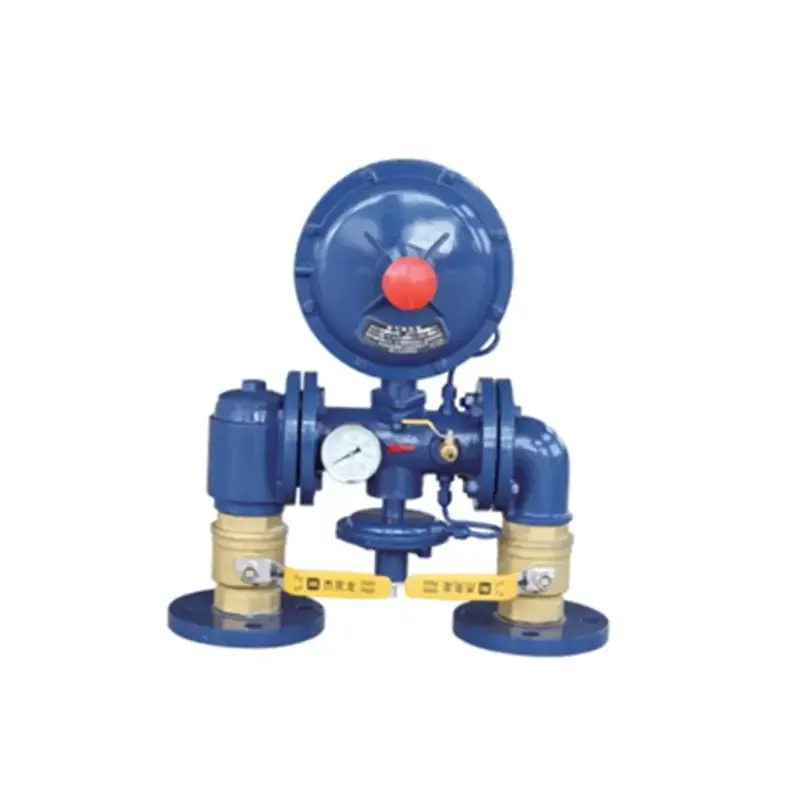
Dec . 21, 2024 13:31
Back to list
مخفض الضغط
Understanding Pressure Reducing Valves The Key to Safe and Efficient Fluid Control
Pressure reducing valves (PRVs) are essential components in fluid management systems, designed to regulate and control the pressure of liquids and gases in various applications. By maintaining a consistent outlet pressure, PRVs protect downstream equipment, ensure safety, and optimize performance. This article delves into the workings, applications, benefits, and maintenance of pressure reducing valves, showcasing their significance in industrial and domestic settings.
How Pressure Reducing Valves Work
At the core of a PRV's function lies the principle of pressure regulation. When a fluid enters the valve, the PRV senses the current downstream pressure and automatically adjusts the opening of the valve to maintain a predetermined outlet pressure. This is typically accomplished through a combination of spring-loaded mechanisms and diaphragm assemblies.
As the upstream pressure fluctuates—whether due to changes in supply pressure or variations in the flow demands—the valve reacts accordingly. If the downstream pressure rises above the set point, the valve reduces the flow by closing partially or completely. Conversely, if the downstream pressure drops, the valve opens to allow more flow. This dynamic balance ensures that equipment operating downstream operates safely and efficiently.
Applications of Pressure Reducing Valves
.
1. Water Supply Systems In municipal water distribution networks, PRVs help maintain safe and consistent water pressure for residential and commercial consumers. 2. Steam Systems In industrial settings, PRVs regulate steam pressure, ensuring that steam processes operate under optimal conditions and preventing overpressure scenarios that could lead to equipment damage. 3. Gas Regulation In natural gas supply systems, these valves ensure the delivery of gas at safe pressures to consumers, enhancing safety and functionality. 4. HVAC Systems In heating, ventilation, and air conditioning systems, PRVs help control the water pressure in heating systems, promoting efficient heat distribution without stressing equipment.
مخفض الضغط

Benefits of Pressure Reducing Valves
Using PRVs offers myriad advantages
1. Protection of Equipment By preventing excessive pressure surges, PRVs protect pumps, pipes, and other equipment from damage, thereby extending their lifespan and reducing repair costs. 2. Energy Efficiency Maintaining optimal pressure levels enhances the overall efficiency of a system. For instance, in steam systems, accurate pressure control can help reduce energy consumption significantly. 3. Improved Safety By controlling pressure, PRVs mitigate the risks associated with overpressure, which can lead to hazardous situations, including leaks or bursts in pipelines. 4. System Reliability With consistent pressure management, systems can operate reliably, reducing downtime and maintenance requirements.
Maintenance of Pressure Reducing Valves
To ensure optimal performance, regular maintenance of PRVs is crucial. Users should
1. Conduct Routine Inspections Regularly check for leaks and signs of wear. Look for any unusual sounds or vibration levels that might indicate malfunction. 2. Test Set Points Periodically verify that the outlet pressure aligns with the desired set point. Adjust as necessary to meet system requirements. 3. Clean and Lubricate Keep PRVs clean and well-lubricated to ensure smooth operation and prevent buildup that can impede function. 4. Replace Worn Parts Over time, components may wear out. Replace these parts promptly to maintain the valve's efficiency and reliability.
Conclusion
Pressure reducing valves play a pivotal role in maintaining the safety and efficiency of fluid management systems across various industries. Their ability to regulate pressure ensures the protection of equipment, enhances energy efficiency, and improves system reliability. By understanding their operation, applications, and maintenance requirements, operators can leverage PRVs to create safer, more efficient industrial and domestic environments. Whether in water supply, steam systems, or gas delivery, PRVs are the unsung heroes of fluid control, empowering industries to function seamlessly.
Next:
Latest news
-
Safety Valve Spring-Loaded Design Overpressure ProtectionNewsJul.25,2025
-
Precision Voltage Regulator AC5 Accuracy Grade PerformanceNewsJul.25,2025
-
Natural Gas Pressure Regulating Skid Industrial Pipeline ApplicationsNewsJul.25,2025
-
Natural Gas Filter Stainless Steel Mesh Element DesignNewsJul.25,2025
-
Gas Pressure Regulator Valve Direct-Acting Spring-Loaded DesignNewsJul.25,2025
-
Decompression Equipment Multi-Stage Heat Exchange System DesignNewsJul.25,2025

